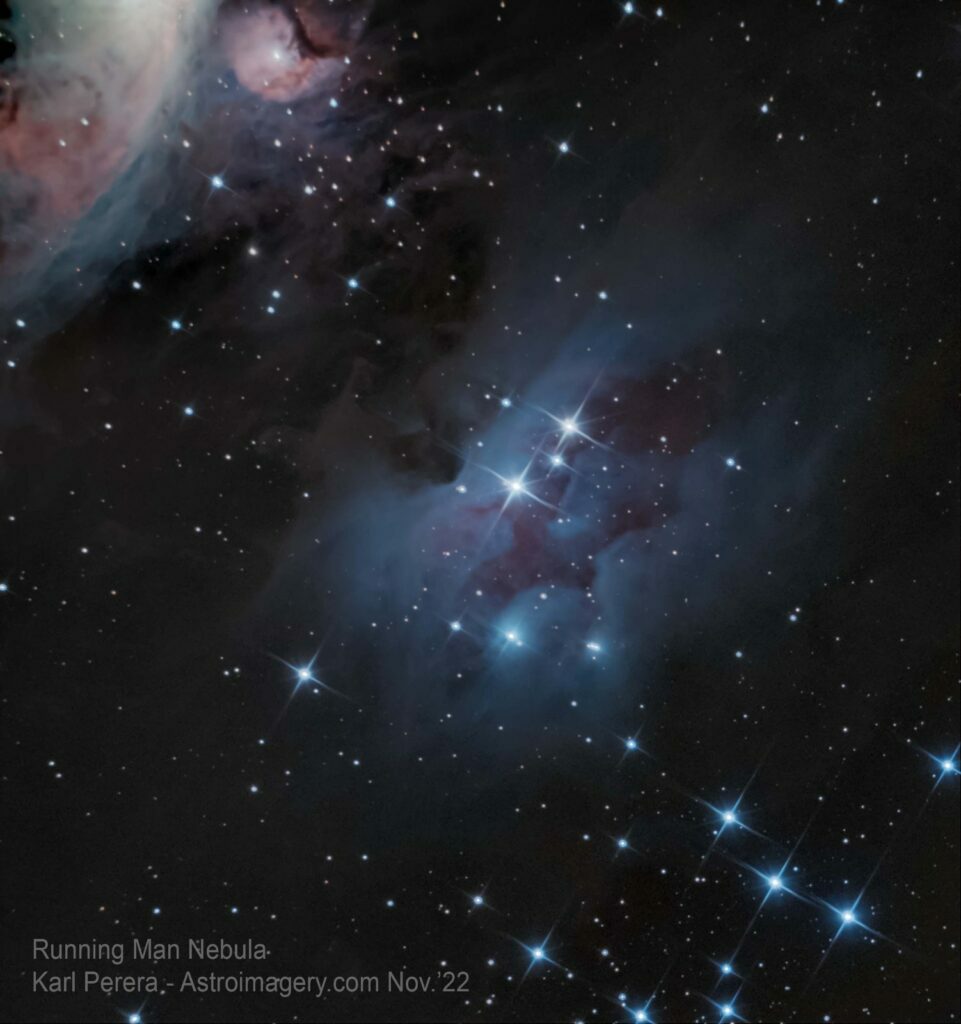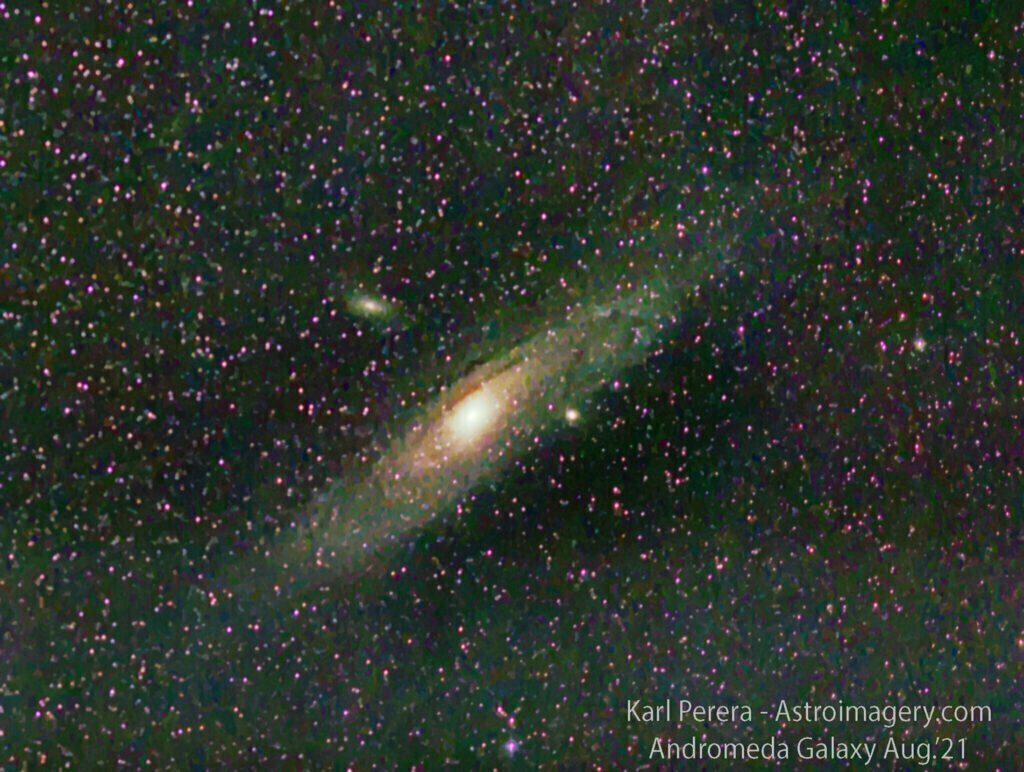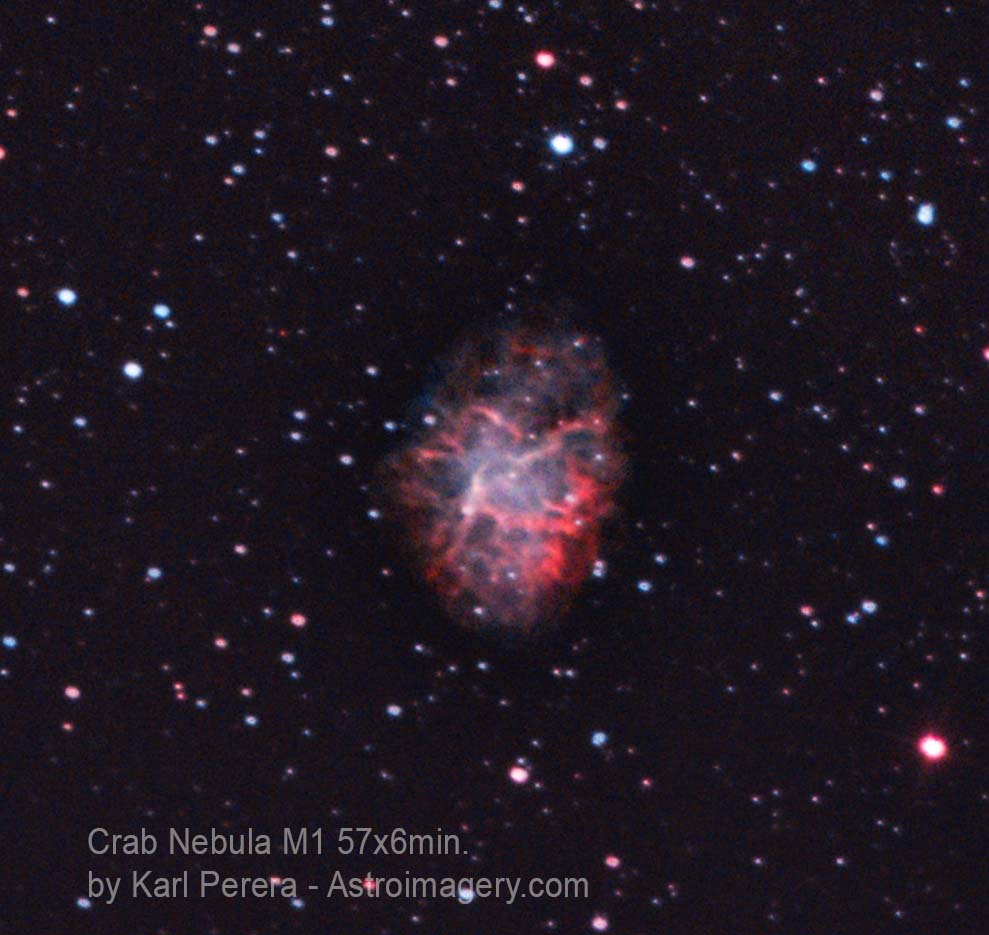Table of Contents
There are many beautiful things in space, but deep-sky objects are some of the most interesting. These celestial bodies are outside of our solar system and can be seen with a telescope or a pair of binoculars. Deep-sky objects like star clusters, galaxies, and nebulae give us a lot of interesting pictures to look at.
In this blog post, we’ll take a closer look at some of the brightest deep sky objects, explain how to find them and talk about what makes them so special. We’ll also consider which telescopes are best for deep-sky viewing. You really don’t want to miss imagining these beauties!
The Brightest Deep Sky Objects to Observe
The brightest deep-sky objects can be viewed with a telescope or even with binoculars. In this post, of all the many deep-sky objects, we’ll take a look at the easiest and brightest that are suitable for beginners to observe or photograph.
What is it that makes some objects easier to see than others? There are a few factors, which include:
- The size of the object
- The distance it is from us
- The apparent magnitude
This is a very simple list, but other factors make the brightest deep sky objects easier to observe or photograph.
For example, galaxies may be observable side-on or may, like the Andromeda Galaxy, be more fully observable as they lie at an angle in the sky, which means we can see more.
The brightest deep sky objects contain gases that reflect or emit bright colours. Hydrogen is seen as red and oxygen is seen as blue. These contrasting colours make a deep sky object seem brighter and may help us see more details.
The Best Telescope to View Deep-Sky Objects
Many of the brighter deep sky objects can be seen with a telescope. This makes them very suitable for beginners.
Refractor or Reflector Telescope: Which is Better for Viewing Deep Sky Objects?
Here are a few interesting points from research I’ve done and comments on various forums:
- Observing deep sky objects is best with a telescope of at least 8-inch aperture.
- A refractor telescope with such a large aperture would be extremely expensive!
- Reflectors are more reasonably priced and 10-inch plus telescopes are great for viewing DSOs according to many comments on Cloudynights Forum.
- Viewing galaxies is best with at least a ten-inch Newtonian reflector.
- Best telescopes for viewing deep sky objects need to be no more than F4 or F5 if possible.
- The more light-gathering ability, and the better the optics of the telescope, the better it will be for viewing details of deep sky targets such as galaxies, star clusters, and nebulae.
- Depending on which DSO you are observing, you need a good-sized field of view so the focal length of your telescope is important.
Both Dobsonian and Cassegrain are two of the best telescopes for deep sky viewing. The larger the aperture, the better the telescope will be for viewing deep sky objects. Which is the best telescope to view deep sky objects is unclear because they both are fantastic choices.
Other great telescopes for observing deep space include the following:
- Celestron Advanced VX Edge 8 – a very good telescope for the amateur astronomer!
- Unistellar EvScope 2 smart telescope – put your viewing on autopilot!
- Skywatcher Flextube 26 inch 400P Synscan. This is a high level telescope that has a huge aperture and will give stunning views of deep sky objects.
How to Find Deep Sky Objects
The brightest deep sky objects are easy to locate when using a camera or pair of binoculars because you can sometimes see the objects with the naked eye. For example, finding the Pleiades star cluster is easy because the stars are so bright that you can see where they are and aim your equipment towards them.
In order to find deep sky objects you need the coordinates. These can be found online by searching for the objects name. Wikipedia will give you the coordinates.
Also, you need to check which deep sky objects are visible in your sky tonight. I use an app called SkySafari for this. Stellarium is another useful program that I use on my laptop. It shows me where the object is at a given time and what it will look like in the field of view of my telescope or camera.
However, with a telescope such as the one I have with a 650mm focal length, I need some help to locate these deep sky objects. I cannot just move my telescope and hope to see them because you need such small movements to point exactly in the correct place.
A telescope mount with a computerised Goto system will help you align your telescope and find deep sky objects easily. These mounts often have the coordinates of the bright deep sky objects programmed into them so they can find them quickly.
Before you can find objects with your Goto system, as I have discovered, you need to set it up correctly. Just because your Goto hand control shows that your telescope is pointed to the coordinates of the deep sky object you are looking for does not mean it is accurate enough to have found the object.
Before you try to find any deep sky object you need to calibrate your telescope mount by polar aligning it. Next, you need to manually align to two or more stars and only then will the RA and DEC coordinates be accurate enough to find objects in the sky.
Even after doing this, I have spent half an hour or more trying to move my telescope into the correct position to find the object I am looking for. This is a big problem because in most cases when looking for deep sky objects you can not easily see them unless they are very large or very bright. How can you find something you can’t see and something which may be quite small?
If your telescope is well set up and the coordinates are correct, you may be able to see the object after taking a long exposure. Often you will then need to center the object in your field of view. This also takes time. I managed to do this by nudging the scope this way or that, but this is very slow and I sometimes lost my target completely.
So what is the best way to find deep sky objects? The answer is plate-solving.
Plate solving is an automatic way to locate deep sky objects and using this, it doesn’t matter how bright they are. How do you do this?
To locate the object, I want to view or photograph I enter the coordinates in my plate solving program and it will find the target.
For more information on using this method to find deep sky objects, check my detailed guide to plate-solving here.
Deep Sky Objects for Beginners
Orion Nebula
The Orion Nebula is one of the most famous deep sky objects in space. It is in the constellation of Orion. It is a place where gas and dust clouds come together to form new stars. It can be seen with the naked eye, and a telescope lets you see it in great detail. The swirling clouds create an incredible visual spectacle that’s truly mesmerizing.
I’ve taken pictures of the Orion Nebula a lot of times, and each time I see it, it gets better. It is simply one of the most beautiful things in space that can be viewed with a telescope. Photographing this nebula is a good way to see how far you’ve come in your journey to become a better astrophotographer.
Because this nebula is so bright, you don’t need very long exposures.It is made up of several nebulae, including the Running Man Nebula, which I just recently took a picture of on its own, as you can see below:

Pleiades
The open star cluster Pleiades, also called the Seven Sisters, is in the Taurus constellation. People have been able to see it with the naked eye for thousands of years. Pleiades, consisting of more than 1,000 stars surrounded by a stunning blue haze, has long been a favourite target for astronomers because from earth it is one of the most beautiful things in space we can see.
There are seven main stars that can be seen with the naked eye on a clear night. Astrophotographers try to capture the blue nebulosity. I haven’t quite mastered this one yet, but I plan to go back very soon.
Check out my most recent picture below:

I took the above image using an RGB filter (the Optolong L Pro), and next time I plan to try imaging it without any filter as I should be able to collect more light that way. The above image was exposed for a total of about six hours, and each sub-exposure lasted for two minutes.
Since the blue light in the nebula is a reflection, you shouldn’t use a narrowband filter.
The Pleiades are one of the most beautiful things I’ve ever seen.
Andromeda Galaxy
The Andromeda Galaxy is the galaxy closest to our own Milky Way. It is an amazing spiral galaxy and one of the brightest deep sky objects that exist in our skies. It is part of the constellation Andromeda and can be seen with the naked eye on nights when the sky is dark. But if you look at it through a telescope, you can see its beautiful spiral arms and bright center in more detail. A must-see for all stargazers!
This galaxy is going to collide with our own Milky Way galaxy in more than 4 billion years and is therefore heading towards us at an incredible speed! So, one day in the future, it will no longer be a deep space object!
You’ll need a focal length of no more than 500mm to capture the galaxy in one frame, and it is better not to use a filter, or you will cut out some of that precious light. This will depend on how much light pollution you have. I used a DSLR camera and a Samyang 150mm lens to fit it all in one frame in the picture I took in 2021.

Ring Nebula
The Ring Nebula is a beautiful planetary nebula that can be found in the constellation Lyra.
When a star dies its outer layers can create gas and dust which form planetary nebulae. These nebulae can be very beautiful because of their colourful and striking appearance.
It’s a good target and not too hard to photograph, but you need a long focal length to get close enough to see details. I took an image with my setup, including my telescope at 650mm, and it was absolutely tiny!
This one needs at least 1500mm, or I don’t think it’s worth doing.
Crab Nebula
The Crab Nebula is a famous remnant of a supernova. It is in the constellation Taurus. This remnant was formed when a massive star exploded during a supernova event, and its remnants now form an amazing visual display.
Why does a star explode and how does it become a supernova? Well a supernova happens as a result of a huge explosion. The heat that a star generates causes pressure to build up over time and eventually it reaches a critical point. Many stars collapse because of this pressure and this causes a supernova.
This nebula is easy to see through a telescope because it has a shape that looks like a crab. Astronomers like to study this object because it looks amazing through any telescope.
In conclusion, the deep sky is full of beautiful sights that truly inspire. From stunning star clusters to magnificent galaxies, the universe holds many wonders waiting to be discovered. With a telescope or pair of binoculars, we can see this beauty up close and see so many other beautiful things in space.

My most recent attempt was the Crab Nebula picture above, which turned out pretty well and has a lot of detail. I took a picture of it with my ZWO ASI533 MC PRO colour camera and 650mm focal length telescope over the course of six hours. I used a ZWO duo band filter, which can pick up both oxygen III and hydrogen alpha wavelengths of light.
Comparing the Brightest Deep Sky Objects in the Northern Hemisphere
I decided to choose ten of the easiest to see objects in the night sky. I also thought about which are the most populaar and well-known targets that a beginner astronomer would want to observe or photograph.
Here’s a table comparing ten of the brightest deep-sky objects we can see:
| Object | Constellation | Apparent Magnitude | Distance from Earth (light-years) | Type |
|---|---|---|---|---|
| Orion Nebula | Orion | 4.0 | 1,344 | Emission nebula |
| Pleiades | Taurus | 1.6 | 444 | Open star cluster |
| Andromeda Galaxy | Andromeda | 3.4 | 2.5 million | Spiral galaxy |
| Ring Nebula | Lyra | 8.8 | 2,000 | Planetary nebula |
| Crab Nebula | Taurus | 8.4 | 6,523 | Supernova remnant |
| Whirlpool Galaxy | Canes Venatici | 8.4 | 31 million | Spiral galaxy |
| Lagoon Nebula | Sagittarius | 6.0 | 4,100 | Emission nebula |
| Hercules Cluster | Hercules | 6.3 | 25,000 | Globular star cluster |
| Dumbbell Nebula | Vulpecula | 7.5 | 1,360 | Planetary nebula |
| Sombrero Galaxy | Virgo | 8.0 | 28 million | Spiral galaxy |
This table includes the object’s name, the constellation it can be found in, its apparent magnitude (how bright it appears to us on Earth), its distance from Earth in light-years, and the type of object it is.
Apparent Magnitude: What does this show?
The apparent magnitude shows how bright a deep space object looks to us from Earth. The larger the number, the less bright the object appears. The apparent magnitude has nothing to do with an object’s actual brightness compared to other objects. This is because some objects that are very bright in reality are just so far away, while others that are less bright are closer and appear brighter. For more information about how the brightness of deep sky objects is measured, see this page on Space.com
Conclusion
Now that you know which are the brightest deep sky objects in the night sky, you can start by using them as targets for your photos. The brighter an object is, the easier it will be to take a picture of it.
Good luck, and I hope you have as much fun taking pictures of these deep sky objects as I have.










